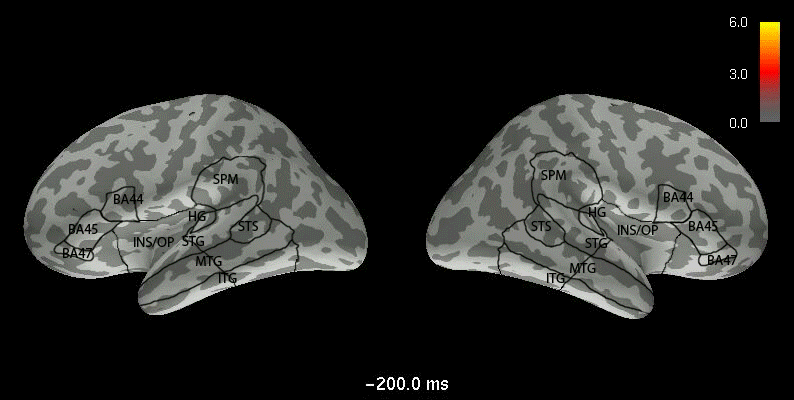Spatiotemporal Searchlight Representational Similarity Analysis (RSA) in fMRI and EMEG
A major challenge for cognitive neuroscience is to characterise the dynamic spatio-temporal changes in the brain that underlie language comprehension. In order to address this issue, we have generalised the spatial searchlight Representational Similarity Analysis (RSA; Kriegeskorte et al., 2006) to time resolved imaging techniques such as EEG and MEG (Su et al., 2012). In the example shown below, we have applied spatiotemporal searchlight RSA to capture cohort-based analysis processes (Marslen-Wilson, 1984) occurring in the brain in real-time as a spoken word is being heard (random effect, p<0.001 whole brain corrected at cluster level).


The early effects in MTG and STG indicate a rapid access to lexical information and arguably reflect the activation of neural systems engaged by the presence of cohort competition. The later effects in left IFG, beginning at around -40 ms, may reflect neuro-cognitive decision processes associated with the selection of the intended words from among multiple competing lexical candidates.
We argue that these methods can capture fine-grained dynamic neural computations in the brain, and at the same time can do so on a large scale - whole brain basis. We are also developing sophisticated nonparametric statistical tests to evaluate the effects and resolve multiple comparison issues. The ability to directly analyse the patterns of neural activity in both space and time enables us to generate and validate computational models and cognitive theories in a natural and informative way. In particular, RSA is able to closely relate dynamic patterns at the neuronal level, measured electrophysiologically, with patterns derived from higher-level cognitive theories.
